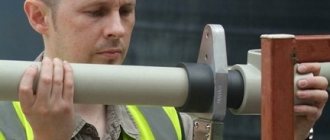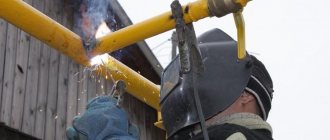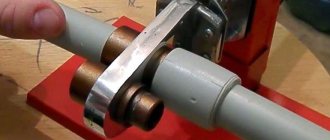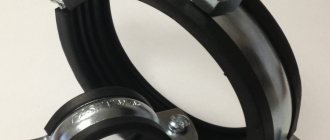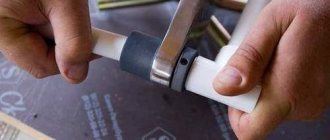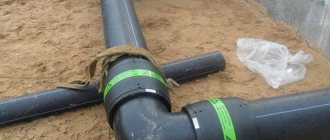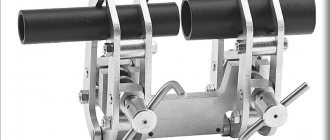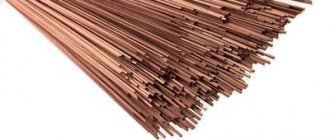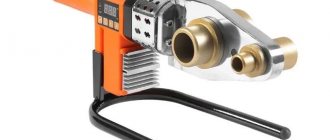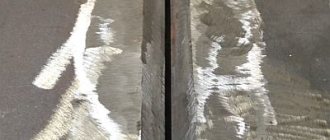Polyethylene pipes today are very often used in laying gas and water pipelines. HDPE pipes can be connected in different ways, one of the most effective and frequently used is electrofusion welding. This method has gained popularity due to its convenience and high efficiency. In this article we will describe in detail what electrofusion welding technology is.
Electrofusion welding technology
Purpose.
Electrofusion welding is a technology for connecting polyethylene and plastic pipes with electric welded couplings.
Distinctive features of electrofusion welding:
— possibility of welding in limited conditions; — the ability to weld complex spatial structures — connecting pipes of different pressures — connecting pipes of different thicknesses — the ability to connect pipes made of different materials — a wide range of different coupling options for connecting — low dependence on the human factor
What is an electric coupling?
There is a metal spiral in the body of the polyethylene coupling. Moreover, the spiral can be different: completely hidden, partially hidden, completely open. When the voltage is turned on, the spiral heats up and melts the welded pipes and coupling. After cooling and crystallization of the material, a reliable connection is formed.
Stages of electrofusion welding:
- cleaning pipe ends (facing)
- removal of the oxide layer (scrapers or Turbo nozzles)
- coupling installation
- fixing pipes in positioner
- welding the coupling using special equipment
- coupling cooling
What materials are they made from?
For the production of electric welded couplings, low-density polyethylene is used, which is the result of the polymerization reaction of ethylene at a low level of pressure. The resulting high-density polymer has the following properties:
- wear resistance;
- immunity to aggressive environments;
- resistance to mechanical deformation and shock.
Polyethylene is an ideal material for the manufacture of such products. It is much stronger than products made from polyvinyl chloride and cheaper than polypropylene materials.
Catalog of equipment for electrofusion welding.
Our company offers the best European equipment for electrofusion welding on the Russian market.
| The Ritmo ELEKTRA Light electrofusion machine is designed for welding PE and PP pipes with a diameter of up to 160 mm (with a logging function, 350 protocols). Special offer! We recommend! Electrofusion welding machine Ritmo Elektra Light |
| The Ritmo ELEKTRA 315 electrofusion machine is designed for welding PE and PP pipes with a diameter of 20 to 315 mm (with a logging function). Bestseller! We recommend! Electrofusion welding machine Ritmo Elektra 315 |
| Universal electrofusion machine for welding PE and PP fittings (from 8 to 48 V) with a diameter from 20 to 800 mm. Electrofusion welding machine Ritmo Elektra 800 |
| Electrofusion machine for welding low pressure pipelines with electrofusions made in Europe with a diameter of 32 to 160 mm. Electrofusion welding machine Mustang 160 V1 |
| Electrofusion machine for welding low-pressure polyethylene fittings with a diameter from W 40 mm to W 315 mm. Electrofusion welding machine Universal 315 V1 |
| Universal electrofusion machine for welding PE and PP fittings (from 8 to 48 V) with a diameter of up to 630 mm. Electrofusion welding machine Rothenberger Roweld Rofuse |
| Universal electrofusion machine for welding PE and PP fittings (from 8 to 48 V) with a diameter of up to 630 mm. Data entry using a pencil or manual input. Electrofusion welding machine Rothenberger Roweld Rofuse + |
| Electrofusion welding machine Roweld Rofuse Print +. Used for welding pipes up to D 1200 mm. Logging function. Electrofusion welding machine Rothenberger Roweld Rofuse Print+ |
| Electrofusion welding machine Roweld Rofuse Sani 160. Used for welding low-pressure systems and waste pipes up to D 160 mm. Automatic recognition of welding parameters. Electrofusion welding machine Rothenberger Roweld Rofuse Sani 160 |
| Caldervale Pegasus electrofusion welding machine for pipe welding. Memory for 2000 protocols, ability to retrieve data via USB port. Special offer! We recommend! Electrofusion welding machine Caldervale Pegasus |
| Electrofusion welding machine Caldervale Centaur for welding pipes D from 25 to 1400 mm. Memory for 700 protocols, ability to retrieve data via USB port. Electrofusion welding machine Caldervale Centaur |
| Electrofusion welding machine Huerner HST-S-315 for welding free-flow drainpipes D from 40 to 315 mm. Electrofusion welding machine Huerner HST-S-315 |
| Electrofusion welding machine Huerner HST 300 Junior 2.0 for welding plastic pipes with a diameter of up to 1200 mm, data entry using a scanner or manually. Electrofusion welding machine Huerner HST 300 Junior 2.0 |
Applications of different Ritmo electrofusion machines:
This review does not present all models of electrofusion welding equipment. Additional information about the models can be found here:
- electrofusion equipment Rothenberger
- electrofusion equipment Ritmo
- Huerner electrofusion equipment
Strengths of using an electrofusion coupling
Typically, electric couplings are used in cases where it is not convenient or practical to butt weld polyethylene pipes. Most often this happens in sewer wells, narrow and inconvenient channels, installation pits in the base and walls of houses. Strictly speaking, electric couplings come to the rescue in cases where butt welding cannot be used.
Another advantage of this method of joining polyethylene pipes is its convenience in the event of an accident or damage to the pipeline. As a rule, such situations require very quick troubleshooting. Welding HDPE pipes with electric couplings is characterized by significant ease of implementation - no special knowledge is needed in this case.
The ease of installation of the device is ensured by the presence of special holes on it. To determine the optimal temperature regime for joining, modern welding machines have a function for reading the required information directly from the barcode that is equipped with the electric couplings. The connection procedure is carried out with the simplest tools - a device for stripping pipe ends, an electric coupling and a welding machine.
Additional accessories for the electrofusion device.
Positioners.
Very often, maintaining the alignment of pipes when welding using electric couplings is not an easy task. This negatively affects the further installation of the system as a whole and the quality of welded joints. We recommend purchasing additional positioners for fixing pipes:
Positioners allow you to obtain excellent professional results (alignment) when welding pipes with minimal effort and time.
We recommend the following most popular positioners:
- Positioner Ritmo UNIVERSAL ALIGNER 63 (from D 20 to D 63 mm)
- Positioner Ritmo UNIVERSAL ALIGNER 160 Light with transport bag (from D 63 to D 160 mm)
- Positioner Ritmo Aligners 500 (125-500 mm) 2 Axes
- Positioner Ritmo Aligners 500 (125-500 mm) 3 Axes
- Rothenberger double positioner on D63 mm
- Double positioner Rothenberger on D90 mm
- Double positioner Rothenberger on D110 mm
- Double positioner Rothenberger on D160 mm
- Double positioner Rothenberger on D225 mm
Turbo nozzles for processing plastic pipes.
It's better to see once than to hear 100 times: Unique patented attachments for trimming and removing the oxide layer!!
- Ritmo TURBO 20 mm
- Ritmo TURBO 25 mm
- Ritmo TURBO 32 mm
- Ritmo TURBO 40 mm
- Ritmo TURBO 50 mm
- Ritmo TURBO 63 mm
Scrapers for removing the oxide layer.
It is necessary to remove the oxide layer before electrofusion welding. Otherwise, we will not get a high-quality welded joint. For small diameters it is convenient to use Turbo nozzles. And for larger ones we recommend special scrapers. And again a small film for demonstration:
- Oxide scraper RTC 160 (from D 50 to D 160 mm)
- Oxide scraper RTC 315 (D 75 to D 315 mm)
- Oxide removal scraper RTC 710 (from D 355 to D 710 mm)
Ritmo PS series scrapers are also available:
- Scraper for removing oxide layers PS 180 (from D 75 to D 180 mm)
- Scraper for removing oxide layers PS 400 (from D 125 to D 400 mm)
Tools
In order for the entire welding process to go as well as possible and ultimately result in a strong and reliable seam, you need to acquire all the necessary tools:
- welding machine,
- positioner - a metal device with several clamps. It allows you to place the pipes in the same plane, and is also used to give the pipes the desired ovality,
- pipe cutter - the disk one is most often used, it is designed to make an even cut,
- scraper,
- ruler,
- cleaner – to remove grease and dirt,
- marker, most often used waterproof, white. It is necessary not only for marking, but also for applying data to the soldering area.
Photo review of the Ritmo Elektra 315 welding machine (for example).
For a general idea of what an electrofusion welding machine is, we bring to your attention a small photo review of an electrofusion welding machine, a top-seller!
Supplied in a convenient case:
Universal collet clamps:
Russified interface. Only in official deliveries to Russia in the online store Mikst.ru
Friendly interface:
Connector for connecting to a computer:
Types of connections using electric welded couplings
HDPE electric welded fittings, due to the thermoplastic nature of polyethylene, can be mounted end-to-end or overlapped to the pipeline. In this case, the product is installed end-to-end using a soldering iron; the parts to be joined are held in a special clamp.
An overlap joint can be formed in a similar way, in which case the coupling and pipe must be preheated, and then the heated end of the pipe must be pressed into the fitting. Both types of connections are based on the same physical effect - the destruction of the polymer at the molecular level when heated above 170ºC, followed by the formation of new bonds that appear when the polymer mass cools.
